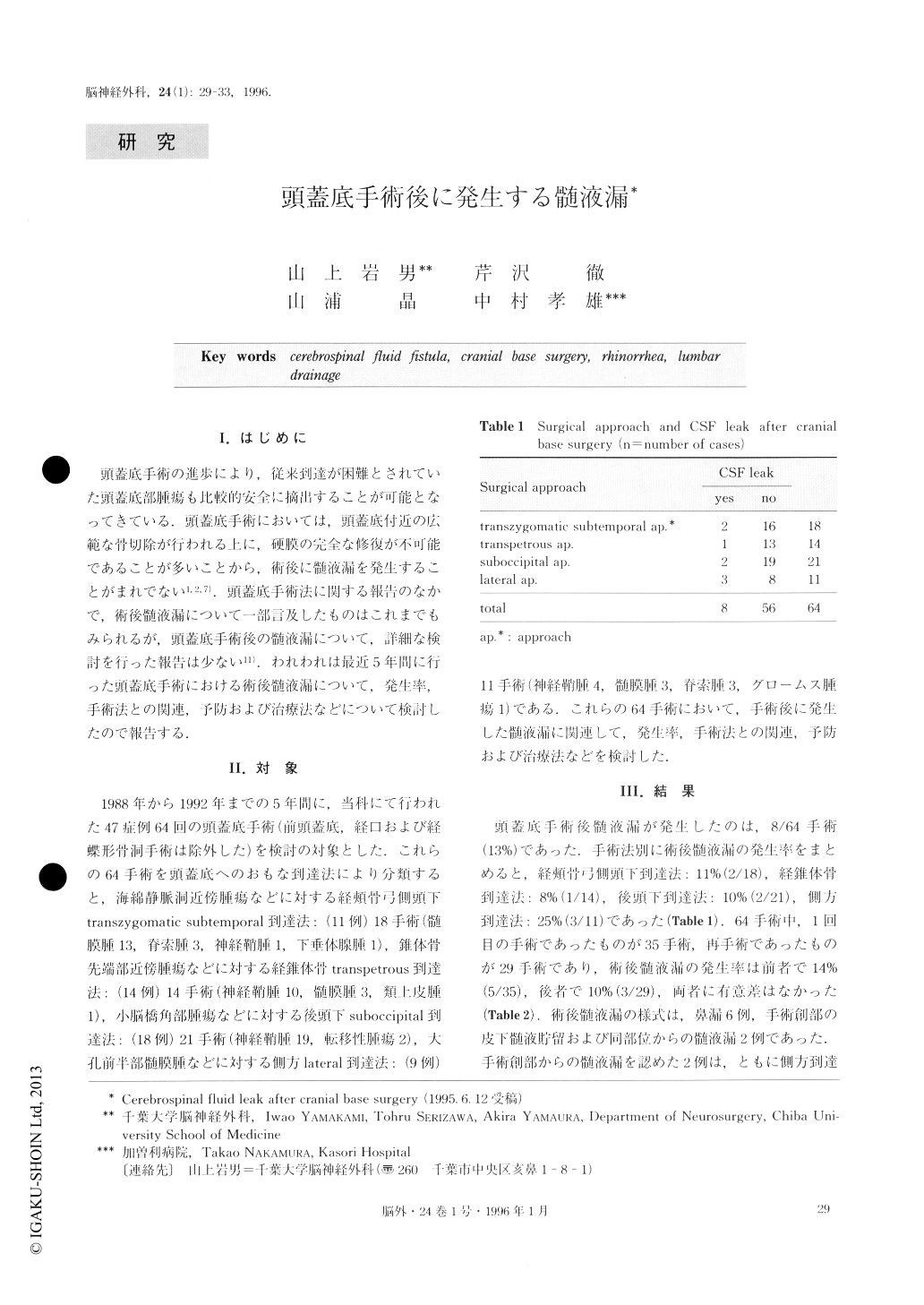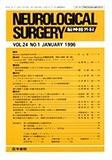Japanese
English
- 有料閲覧
- Abstract 文献概要
- 1ページ目 Look Inside
I.はじめに
頭蓋底手術の進歩により,従来到達が困難とされていた頭蓋底部腫瘍も比較的安全に摘出することが可能となってきている.頭蓋底手術においては,頭蓋底付近の広範な骨切除が行われる上に,硬膜の完全な修復が不可能であることが多いことから,術後に髄液漏を発生することがまれでない1,2,7).頭蓋底手術法に関する報告のなかで,術後髄液漏について一部言及したものはこれまでもみられるが,頭蓋底手術後の髄液漏について,詳細な検討を行った報告は少ない11).われわれは最近5年間に行った頭蓋底手術における術後髄液漏について,発生率,手術法との関連,予防および治療法などについて検討したので報告する.
We investigated the incidence, prevention and man-agement of postoperative cerebrospinal fluid (CSF) leaks in 64 cranial base surgeries (18 transzygomatic subtemporal approaches, 14 transpetrous approaches, 21 suboccipital approaches and 11 lateral approaches). The incidence was 13%(8/64); the lateral approach had the highest incidence (25%) among the four surgic-al approaches. The CSF leakage usually occurred as rhinorrhea, but the lateral approach resulted in the sub-cutaneous CSF retention and CSF leakage from the surgical wound. Six CSF leaks developed within 10 days after surgery (“early onset”) and two developed 21 and 23 days after surgery (“late onset”). Preventive lumbar CSF drainage was significantly effective. Post-operative CSF leak occurred in none of 8 cases using preventive lumbar CSF drainage and in 8 out of 56 cases without it (P<0.01). Lumbar CSF drainage was also effective in the treatment of the postoperative CSF leaks; it cured 5 out of 8 CSF leaks. All of the five CSF leaks which were cured by lumbar drainage were of the “early onset” type. Both of the two “late onset” CSF leaks needed surgical treatment.

Copyright © 1996, Igaku-Shoin Ltd. All rights reserved.


